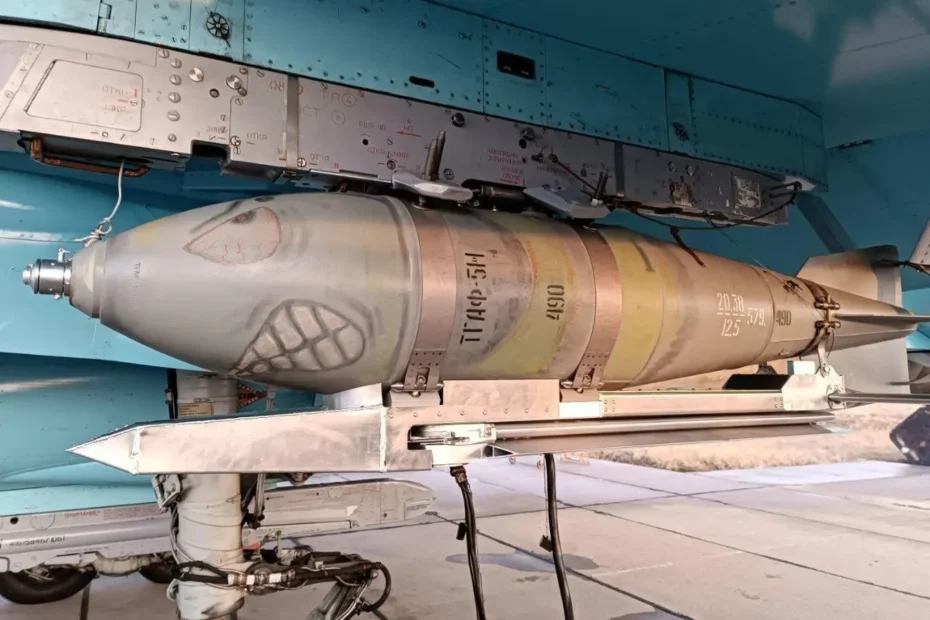Today’s news sheds light on one of the most feared weapons among Ukrainian soldiers: glide bombs. These weapons, which transform conventional “dumb” munitions into precision-guided weapons, pose a significant threat to Ukrainian forces on the front lines. Russian state media agency Tass has reported that Moscow is preparing to commence production of a new glide bomb, the Dr, which is based on cluster munition technology and can target armored vehicles, buildings, and air defenses.
Introduction to Glide Bombs
Glide bombs represent a significant advancement in military technology, allowing traditional munitions to be equipped with unfolding wings and guidance systems, thereby enhancing their accuracy and range. By retrofitting existing bombs with glide kits, aircraft can launch these weapons from beyond the range of enemy air defenses, making them a formidable threat on the battlefield.
Cluster Bomb Controversy
The use of cluster bombs, including glide bombs based on cluster munition technology, has sparked controversy globally. While over 100 countries have signed a treaty banning cluster bombs, both Russia and the US have refrained from becoming signatories. Washington’s decision to supply key allies with cluster munitions, despite the treaty, has raised concerns about the humanitarian impact of these weapons.
Characteristics of Russian Glide Bombs
Russian glide bombs, such as the Fab 500 UMPK and Fab 1500 M54, are based on Soviet-era general-purpose bombs and equipped with glide kits for enhanced maneuverability and precision. The Fab 500 UMPK, with its thin casing and GPS navigation system, boasts a range of up to 45 miles and is available at a relatively low cost of $25,000 each. The larger Fab 1500 M54, weighing 1,500 kilograms, presents a formidable threat with its reported range of 25 miles, albeit limiting the number that can be carried by Russian bombers.
Comparison to US Glide Bombs
The Fab 500 UMPK has been likened to the US Joint Direct Attack Munition (JDAM), which has seen extensive use in conflicts such as Iraq and Afghanistan. The supply of JDAMs to Ukraine highlights the strategic significance of precision-guided munitions in modern warfare. However, reports suggest that Russian forces may have developed countermeasures to inhibit the GPS guidance systems of these weapons, posing challenges for Ukrainian defenses.
Challenges and Vulnerabilities
Despite their effectiveness, glide bombs pose challenges and vulnerabilities for both Russian and Ukrainian forces. Malfunctions and unintended strikes, such as those experienced in Belgorod, Russia, underscore the risks associated with deploying these weapons. Russian bombers face the dilemma of launching glide bombs from high altitudes to maximize effectiveness while exposing themselves to long-range air defenses.
Countermeasures and Future Considerations
Ukrainian forces are confronted with the daunting task of countering glide bomb attacks, with air defense units vulnerable to Russian rockets and artillery systems. The potential deployment of F-16s armed with long-range air-to-air missiles could offer a deterrent against Russian bombers, mitigating the threat posed by glide bombs. However, until such measures are implemented, Ukrainian soldiers remain exposed to the constant threat of Russian glide munitions on the front lines.
Conclusion: The Persistent Threat of Glide Bombs
In conclusion, today’s news underscores the formidable threat posed by Russian glide bombs to Ukrainian soldiers and civilians alike. Despite efforts to develop countermeasures, the inherent challenges and vulnerabilities associated with these weapons persist. As the conflict in Ukraine continues, the deployment of glide bombs underscores the evolving nature of modern warfare and the imperative for ongoing innovation in defense strategies and technologies.
